Physics
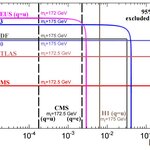
As an editor of the new Elsevier journal "Reviews in Physics" I am quite proud to see that the first submissions of review articles are reaching publication stage. Four such articles are going to be published in the course of the next couple of months, and more are due shortly thereafter. While Reviews in Physics covers the whole of Physics research, three of the four papers on the finish line focus on experimental high-energy physics. One of them appeared in the Arxiv just a few days ago in its final, reviewed form. It is a short review of the status and prospects of our investigation…

While in the process of fact-checking information that is contained in the book I am finalizing, I had the pleasure to have a short discussion with Gordon Kane during the weekend. A Victor Weisskopf distinguished professor at the University of Michigan as well as a director emeritus of the Michigan Center for Theoretical Physics, Gordon is one of the fathers of Supersymmetry, and has devoted the last three decades to its study.The LHC results have not brought any signal of supersymmetric particles yet, but Gordon has apparently not lost his optimism, as he believes that Nature is indeed…

I was very happy today to sign a contract with an international publisher that will publish a book I have written. The book, titled "Anomaly! - Scientific Discoveries and the Quest for the Unknown", focuses on the CDF experiment, a particle detector that operated at the Tevatron collider for 30 years. The Tevatron was the highest-energy collider until the turn-on of the LHC. The CDF and DZERO experiments there discovered the sixth quark, the top, and produced a large number of world-class results in particle physics.
The CDF collaboration was made by over 50 institutions from many…

Normal
0
MicrosoftInternetExplorer4
100
Years of Einstein’s General Relativity
The world celebrates 100 years of
General Relativity (GR) -- established scientific breakthrough known as
working theory of Gravity Physics, Cosmology and even new Technology. Through
all the 100 years its recognition by the scientific community has grown with
acceleration.
We would like to underline yet
another interesting but less widely mentioned aspect of GR as a possible
paradigm for new fundamental physics, e.g. Brian.
Greene, The Elegant Universe, New York. …
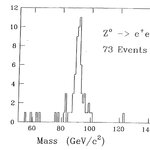
As I am revising the book I am writing on the history of the CDF experiment, I have bits and pieces of text that I decided to remove, but which retain some interest for some reason. Below I offer a clip which discusses the measurement of the natural width of the Z boson produced by CDF with Run 0 data in 1989. The natural width of a particle is a measurement of how undetermined is its rest mass, due to the very fast decay. The Z boson is in fact the shortest lived particle we know, and its width is of 2.5 GeV.
------
In late summer of 1989, no longer than a month
after the SLAC workshop…
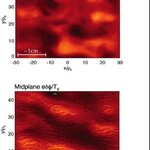
For more than 60 years, fusion scientists have tried to use "magnetic bottles" of various shapes and sizes to confine extremely hot plasmas, with the goal of producing practical fusion energy. But turbulence in the plasma has, so far, confounded researchers' ability to efficiently contain the intense heat within the core of the fusion device, reducing performance. Now, scientists have used one of the world's largest supercomputers to reveal the complex interplay between two types of turbulence known to occur in fusion plasmas, paving the way for improved fusion reactor design.
Years of…

The heart of darkness is a metaphor but it is quite literal when it comes to space. Not only is matter as we know it just a fraction of what is out there, it is only a few percent. That means the rest of the universe is truly unknown. Physicists have given what we don't know terms like Dark Matter and Dark Energy and the race is on to find signatures in "near space" (within a few thousand light years of Earth by measuring electrons and gamma rays.
The CALorimetric Electron Telescope (CALET) investigation will track the trajectory of cosmic ray particles and measure their charge and energy and…
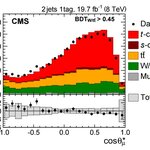
Top quarks, the heaviest known elementary particles, were discovered in 1995 by the CDF and DZERO collaborations, when the two Fermilab experiments spotted the decay of top-antitop pairs produced by strong interactions in the proton-antiproton collisions provided by the Tevatron collider at 1.8 TeV center-of-mass energy. In principle, a hadron-hadron collision can produce top quarks both in particle-antiparticle pairs, or singly. However, the single particle production processes are less frequent, as they take place via electroweak interactions: the weakness of the production…

The WF-Collapse (WF-C) is in general a nonlocal
phenomenon. Consider for example a one particle plane wave (large wave packet)
in nonrelativistic quantum mechanics:
the experimental particle location in one place is a WF-C that replaces the plane
wave by a new WF with zero location in all other places – it is because of
conservation of the number of particles. It means simultaneous prediction with
confidence of negative search results at any other far place where the particle
could have been detected before the WF-Collapse. Another example, much discussed in
the literature, is entanglement of…
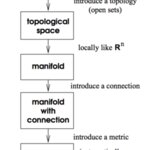
In my last blog, I wrote in detail about zero, one, real numbers, complex numbers and quaternions (or as I now prefer to call them, space-time numbers although I use them interchangeably). For each sort of number, there were rules for addition, rules for multiplication, and a relevant animation. The rules happened to get more complicated going from zero out to the space-time numbers, but they were all of the same form. That makes sense since zero, one, the real numbers, and the complex numbers live inside the tent of space-time numbers.
None of those numbers were used to do any calculations…